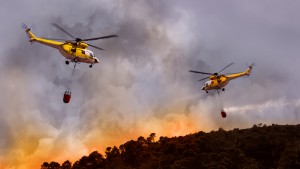Following nearly a year of meetings, in November of 2019, the Governor’s Council for Wildfire Response released its final report with recommendations on methods and models to prepare Oregon for increasingly severe wildfire seasons by strengthening, improving, or replacing existing systems.
The 110-page final report lays out a long-term vision for adaptation to wildfire, risk reduction, and fire suppression improvements, providing 37 recommendations that the governor’s team now seeks to address and implement.
Many elements of the recommendations are sought through the governor’s wildfire plan, proposed as a legislative concept during the January Legislative Days. The concept, now SB 1536 calls for general investment in mitigation through fuels reduction and standards for utility companies; suppression through creating safe zone structures and expanding first responder coverage; and adaptation through utilization of the Office of Emergency Management, improvements to building codes, air filtration systems, and review of suppression costs. A general outline of the governor’s plan can be found here.
Implementation strategy remains cloudy on modifications to land use planning, new building codes changes, and urban-rural interface protections through defensible space. Association of Oregon Counties (AOC) Legislative Affairs Manager, Susan Morgan is engaged in a workgroup assembled to flush out the proposal. AOC will seek to best reflect feasible options and opportunities for implementation that work for counties.
An informational meeting was held on the bill on the opening day of Session. A public hearing followed on February 5. The current bill will reportedly be broken into several concepts, and while its final form is not yet decided, some elements of the governor’s plan are expected to pass this Session.
Contributed by: Megan Chuinard | Public Affairs Associate
